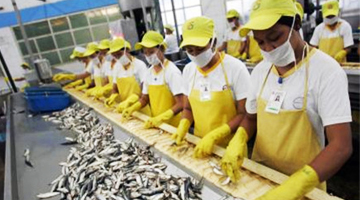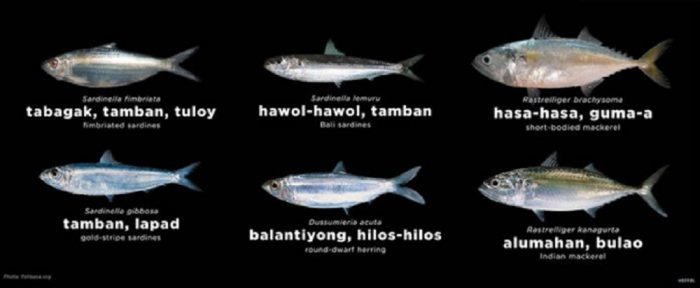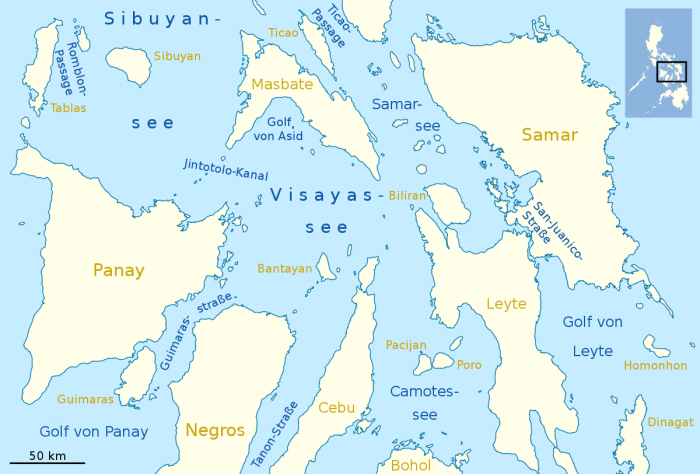Craving for sardines or tuyo because of the past days’ feast of meat dishes? Would you know how important sardines is in our fisheries stocks?

Oceana supports the closed fishing season in the Visayan Sea for sardines and other selected fish and for sardines in the Zamboanga Peninsula, as the group also calls for complementary measures to ensure food and livelihood security for municipal fisherfolk and commercial fish workers during the period.
“The declaration of closed fishing season by the Bureau of Fisheries and Aquatic Resources this year takes a more significant turn because the National Sardines Management Plan was signed and up for implementation. Secondly, we have the rules on vessel monitoring measures also ready for implementation that will help in effectively enforcing the closed season,” said Gloria Estenzo Ramos, Oceana Vice President.
The international ocean conservation group said the strong enforcement of the closed season can be complemented by the participatory process that the Sardines Management Plan provides. Ramos said this is an opportunity to engage fisherfolk, civil society groups, local governments, and other stakeholders in crafting the Fisheries Management Plan of sardines as an important element of managing the impact of the closed fishing season.
“With the spatial and temporal closure in the portion of the Visayan Sea, it is imperative for Fisheries Management Area 11 and pertinent Fisheries Management Areas through the Management Body and put in place a monitoring and evaluation mechanism that will look into the biological condition of the fisheries resources, and socio-economic impact of this harvest control measure. This science-based intervention of policies and plans that are developed through the participatory mechanism of the Fisheries Management Area will be most helpful,” explained Ramos.

According to Oceana, sardines is an important fisheries resource especially in this time of pandemic and calamities when it is one of the items commonly given out to the affected families in relief and emergency response packs. However, our sardines municipal fisherfolk are also among the poorest of agriculture sector that are most in need of this support.
In the recently released third quarter report of the Philippine Statistics Authority, fisheries registered a 1.9 percent increase in output. It contributed 15.8 percent to the total agricultural production. Bali sardinella or tamban posted a 31.5 percent growth and among the two other fisheries species that posted higher production growths. The others being bigeye tuna with 39.9 percent increment, and blue crab at 25.5 percent.
“The sustainable management of sardine fisheries is one of the goals of the National Sardine Management Plan. Part of the plan is to determine the impact of the close season and support the provision of job opportunities during the close season. As we continue to grapple with the challenges of the pandemic, climate change and fisheries management.the, our fisherolk bear the heavier burden than any other sections of our population. Ironically, they are our food producers that suffer the most from hunger, barely able to give their children their basic necessities of shelter and education,” Ramos said.

Based on the Fisheries Administrative Order no. 167-3, issued in 2013, portions of the Visayan Sea are closed for catching, selling, and buying of sardines and herrings (tamban/ tabagak/ tamban-tuloy/ balantiong) and mackerels (hasa-hasa/ gumaa/ bulao/ alumahan). Meanwhile, the Zamboanga Peninsula’s closed fishing season is for sardines only.
The closed season in the Visayan Sea started on November 15 and will end on February 15, 2021. The Zamboanga Peninsula closed season for sardines will be on December 1, 2020 to March 1, 2021.

According to Ramos, banning commercial fishing in municipal waters is considered one of the harvest control measures that the FMA should enforce. “The use of technology like Visible Infrared Imaging Radiometer Suite can be used to detect violations during the close season. The Department of Agriculture-Bureau of Fisheries and Aquatic Resources (DA-BFAR) recently issued the rules for vessel monitoring mechanisms. The installation of tracking device in the commercial fishing vessels will highly improve the enforcement efforts,” Ramos added.
Oceana is an international advocacy organization dedicated to protecting the world’s oceans. Since 2014, Oceana has been working closely with national and local government agencies and stakeholders to restore the abundance of Philippine fisheries and marine resources.
(END)